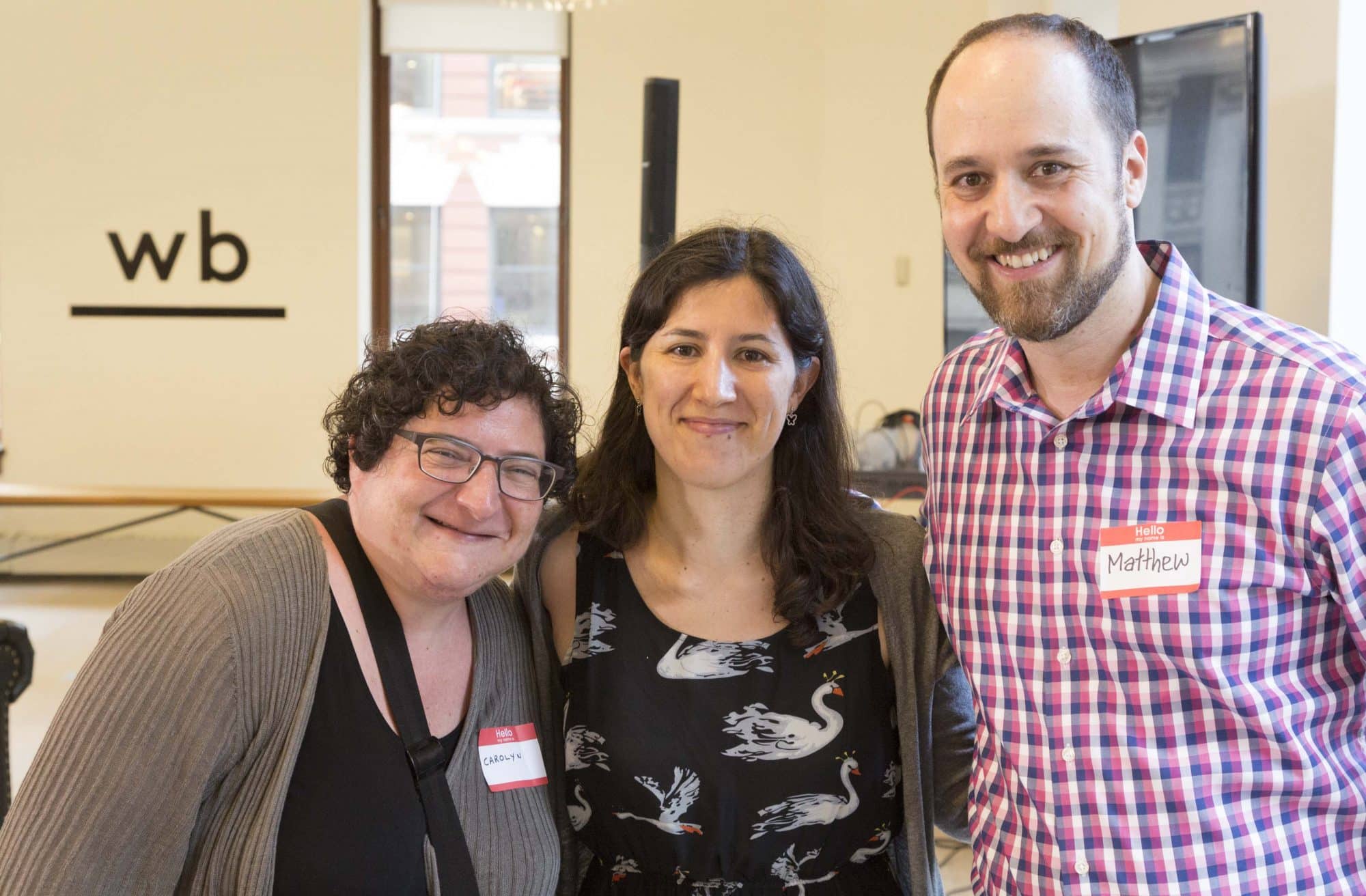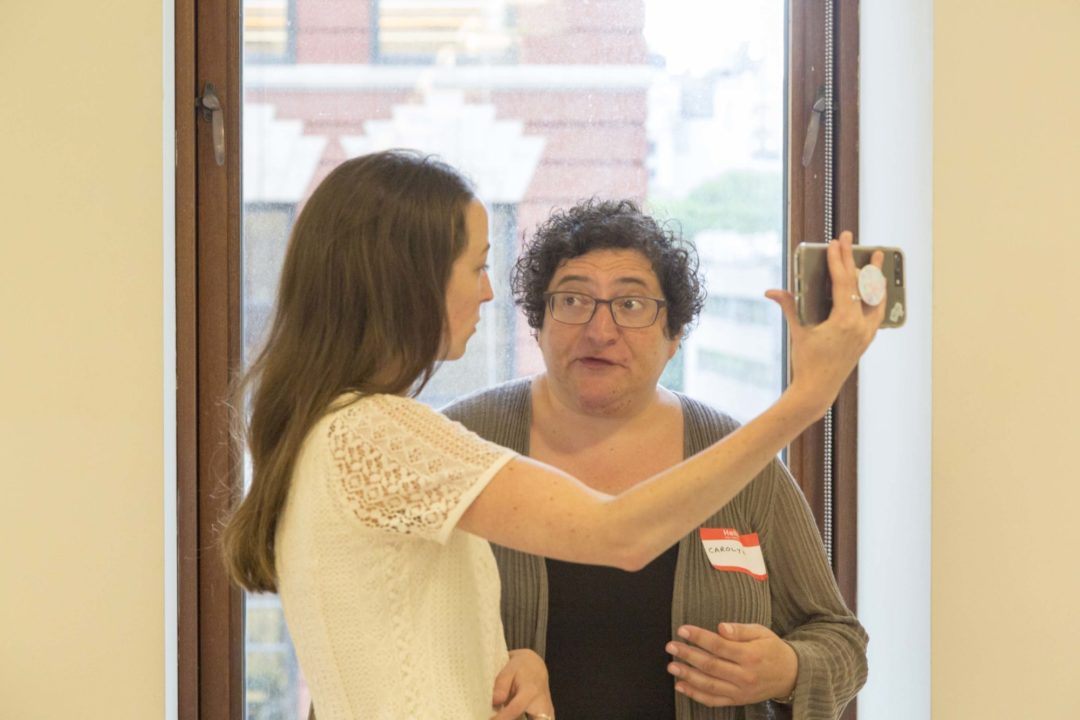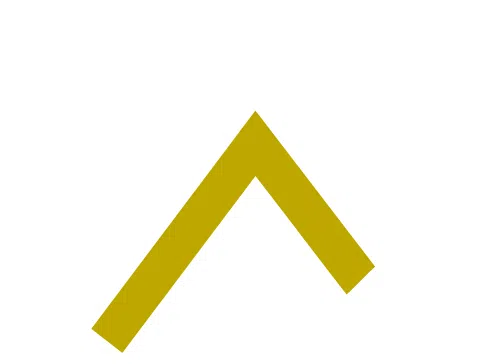We often see mission-driven organization challenged by how to best leverage data. The questions non-profits face are more than technical – they are strategic, ethical, and experiential. At the same time, non-profits are seeing the biggest opportunity ever to increase fundraising, engage constituents meaningfully, and measure value. To serve this need and to engage the big questions with the community at large, we are proud to announce our deep involvement in a new event series in New York — Data + the Greater Good. Organized by our Junior Consultant, Mary Plum, and our Vice President of Product and lecturer in the Master of Applied Analytics program at Columbia University, Matthew Weber, the series dives deep into how mission-driven organizations are embracing data and analytics to enhance their mission and impact.
The first program for the series focuses on how data can be leveraged by the arts and humanities. The first event’s speakers included Sree Sreenivasan, digital strategist and former Chief Digital Officer for Columbia University, Chief Digital Officer at The Met, and Chief Digital Officer for the City of New York; Catherine Devine, Chief Digital Officer at the American Museum of Natural History; and Larry Liebovitch, Adjunct Senior Researcher Scholar at Columbia University.
The most recent event, held on June 20th 2018, featured speakers Elena Villaespesa, Digital Analyst at the Metropolitan Museum of Art and Assistant Professor at Pratt Institute, and Carolyn Royston, Chief Experience Officer at Cooper Hewitt, Smithsonian Design Museum.

Guest speakers Carolyn Royston and Elene Villaespesa with our VP of Product Matthew Weber
Elena began the night by discussing how to implement an analytics culture at organizations based on her experience at the Met. The data that museums collect can be used to better understand visitor experiences, to increase funding, and especially to capture how organizations create value and impact relating to their mission.

Source: Villaespesa, Elena. “Analytics journey.” Digital Analytics in Museums, June 20 2018, New York City, New York. Slide 6.
Elena provided a framework for how to implement such a culture:
- Step 1: Audit – Understanding what data sources the organization already has or doesn’t have, as well as the quality of the data
- Step 2: Requirements – Gathering data needs from people in the organization, which is crucial for developing an analytics culture
- Step 3: Strategy – Outlining who, how, and why the data is used
- Step 4: Indicators – Determining metrics and Key Performance Indicators (KPIs) for measuring success
- Step 5: Tools – Determining the tools that are needed
- Step 6: Communication – Communicating the results back to the team so they can make informed decisions. Half of Elena’s time at the Met is spent on this step.
Elena, whose PhD was in measuring social media success for museums, also talked about social media analytics for museums and trends that she has observed. For instance, on learning that Pinterest was a top referrer to the Met’s website, Elena discovered that rather than users looking for specific collections, they were instead discovering the Met’s works after looking for inspiration around topics of fashion, knitting, and even tattoos.
Carolyn also underscored the necessity of digital integration for an organization’s success and achievement of its mission. Carolyn approaches digital integration holistically, in a way that is cross-functional and cross-departmental. As such, she sees new roles developing that use new skills to integrate onsite and virtual platforms. At the same time, new challenges are presenting themselves. There are multiple touchpoints, or places where visitors and members interact with an organization, emerging both in physical spaces and digital spaces that are complex, with different owners and stakeholders. Challenges include how to integrate new practices with traditional practices, where to put effort, how to integrate different touchpoints together, and how to measure the success and value of new initiatives.

Our Junior Consultant Mary Plum interviews Carolyn
Like Elena, Carolyn saw data as valuable for understanding visitor engagement and then personalizing visitor experience. As the former Director of Digital and Information Services at the Isabella Stewart Gardner Museum in Boston, Carolyn focused intensively on the role of digital in a visitor’s experience. Her holistic approach accounted for the various needs, expectations, and motivations of varying visitor profiles. By interviewing stakeholders and shadowing visitors as they experienced the museum, Carolyn and her team gained a 360° view of visitors pre-visit, during the visit, and after the visit. This data gave valuable insight into what visitors were experiencing and let Carolyn and her team enact change; they built a new website and created immersive audio tours to provide a more thoughtful and intimate visitor experience.
At Cooper Hewitt, Carolyn is creating a ladder of engagement by intelligently using data internally for content, programming, resources, and funding. She hopes to bring together different visitor-facing functions across the organization, joining silos to integrate the human, physical, and digital experience with the visitor at the center of it all. Her advice to approaching digital is to think holistically, focus on the visitor, concentrate on new projects, and explore new ways of working.
To RSVP for the July 23rd Meetup, featuring Mary Caraccioli, Chief Communications Officer at The Lincoln Center and Bridget Mendoza, Director of Business Systems at The Whitney Museum, click here.


